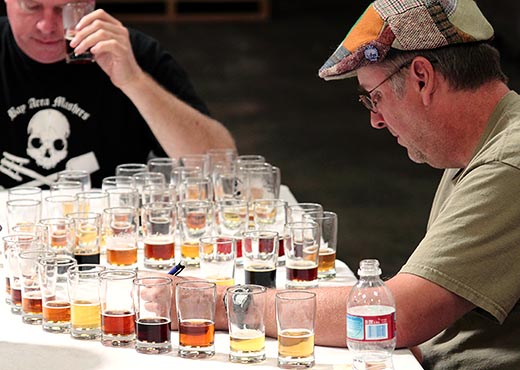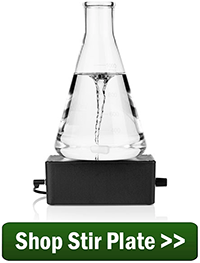 You’re brewing a beer and it tastes just fine after primary fermentation. You move it to secondary, bottle it, and when you go to taste it…butter bomb! This sounds like a problem with diacetyl.
You’re brewing a beer and it tastes just fine after primary fermentation. You move it to secondary, bottle it, and when you go to taste it…butter bomb! This sounds like a problem with diacetyl.
What is Diacetyl?
Diacetyl is a natural byproduct of fermentation. A small amount of diacetyl is acceptable in certain beer styles, most notably in a variety of ales and a handful of lager styles, but most lagers should not present any diacetyl. Excessive diacetyl in any beer can be a defect.
Causes of Diacetyl in Beer
Diacetyl is produced when beer is fermented. Diacetyl can be produced in excess when yeast is stressed, such as when fermentation temperature is too high or wort isn’t sufficiently aerated. Diacetyl can also be caused by bacterial infection.
Determination of Diacetyl in Beer
Diacetyl is detected as a butter taste in the beer’s flavor and aroma.
The challenge is that there may be a diacetyl precursor in a sample of beer that you can’t taste or smell: acetolactate. So how do you test for diacetyl when it isn’t actually present in your beer? How do you catch the diacetyl before it’s too late?
How to Test for Diacetyl in Beer
- Using cleaned and sanitized equipment, pull two small (~2 oz.) samples of wort from the primary fermenter and cover them with aluminum foil.
- Place one in the refrigerator and the other in a hot water bath. The heated sample should rest at 140-160˚F for 20 minutes.
- Place the heated sample in the refrigerator with the other sample (or in an ice bath).
- When both samples are chilled, take them out for a taste. If you can taste diacetyl in the unheated sample, there is diacetyl in your beer. If you can taste diacetyl in the heated sample but not the unheated sample, your beer has acetolactate, which was converted into diacetyl by the high temperature. In either case, do a diacetyl rest. For an ale, this may just be a couple extra days in the primary fermenter. For a lager, you should increase the temperature of the beer to about 60˚F, which will help the yeast “clean up” the diacetyl in your beer.
Tips for Preventing Diacetyl in Beer
- Clean and sanitize equipment thoroughly to prevent infection.
- Shop for beer yeast depending on diacetyl production – check the manufacturer’s website.
- If brewing with a high amount of adjuncts, consider using supplemental yeast nutrient.
- Aerate wort well, using pure oxygen if possible.
- Pitch an adequate amount of healthy, viable yeast.
- Keep fermentation temperature within the yeast manufacturer’s specifications.
- Perform a diacetyl rest after primary fermentation. In the case of lagers, raise the temperature to 60-68˚F for 2-3 days before transferring to secondary and cold conditioning.
Have you ever had issues with diacetyl or a butter taste in your beer? What have you done to remedy the situation?
—–
David Ackley is a beer writer, brewer, and self-described “craft beer crusader.” He holds a General Certificate in Brewing from the Institute of Brewing and Distilling and is founder and editor of the Local Beer Blog.

Bought a small chest freezer on sale and a 20 dollar InkBird digital controller. Brewed a SMASH with temp control at 63 degrees and then turned the temp down to 33 for another 3-4days, then bottled. In the chest for almost a month.
No secondary, went straight from primary to the bottling bucket. The beer was the cleanest tasting and the clearest I have ever bottled. Really simple beer, came out really good.
Wish I had taken the temp control step a year ago. Will never do a beer with out temp control again…easily the best thing I have done to improve my brewing. And it is SO EASY. Plus I can still use that freezer come deer season and sausage making time.